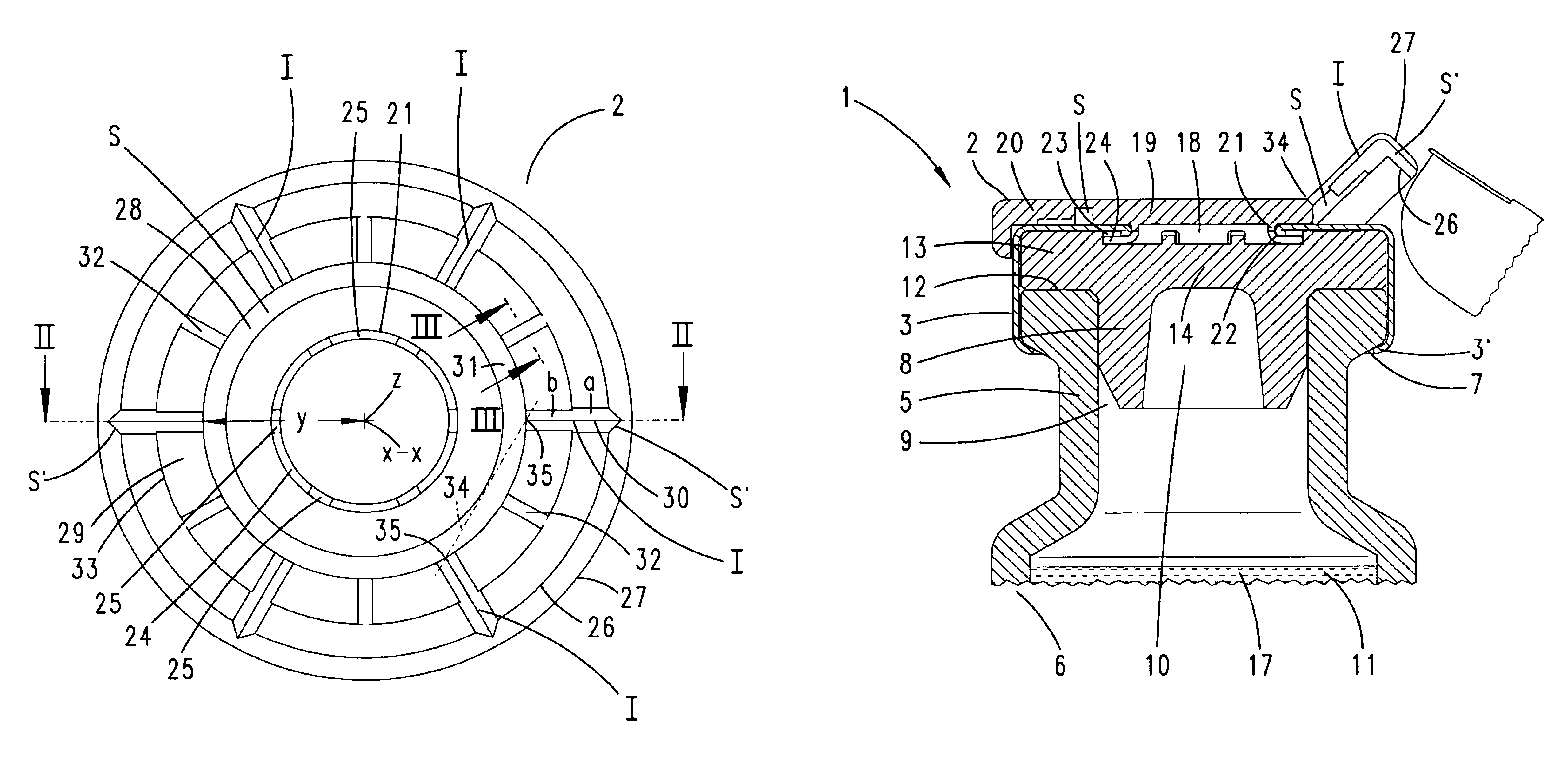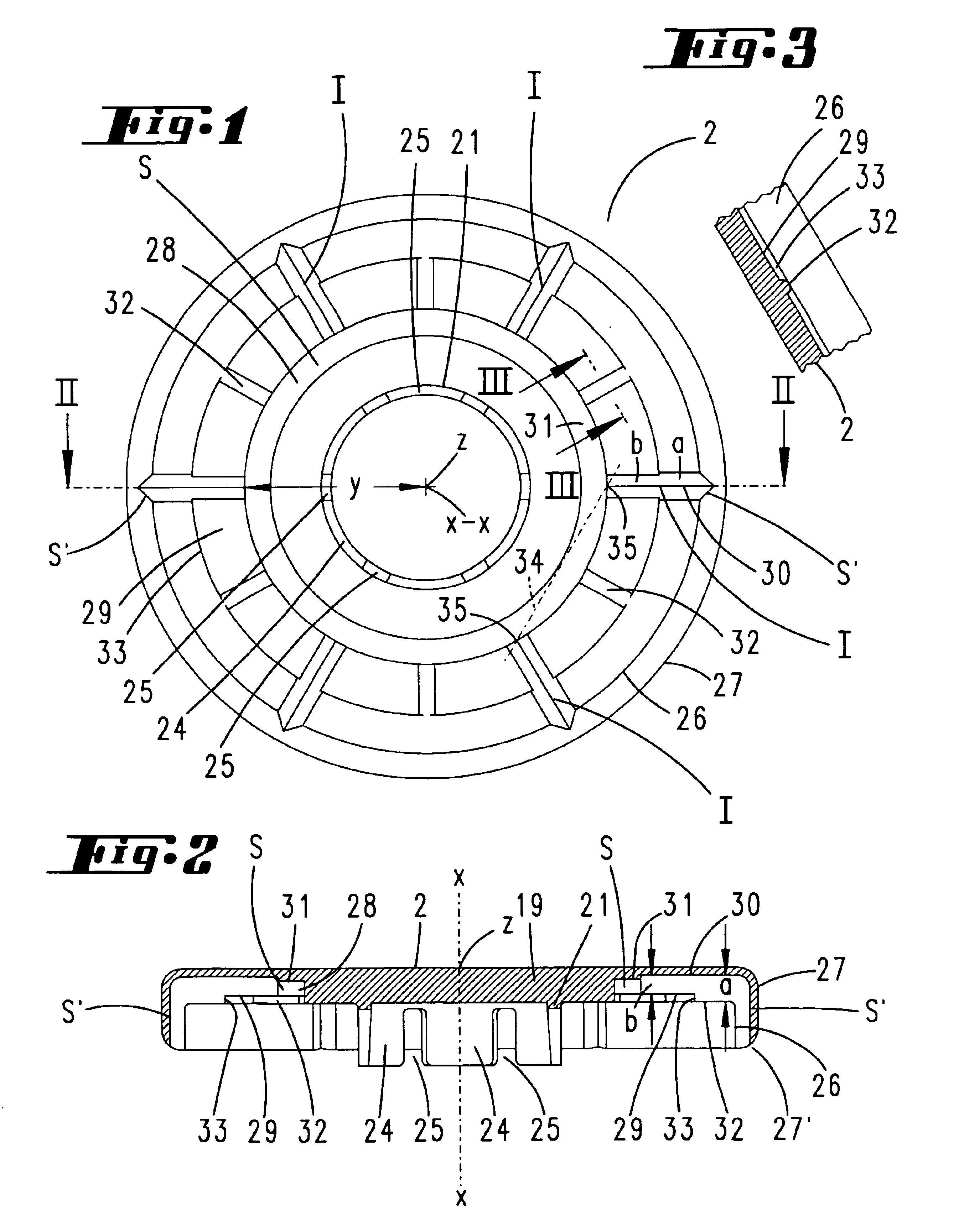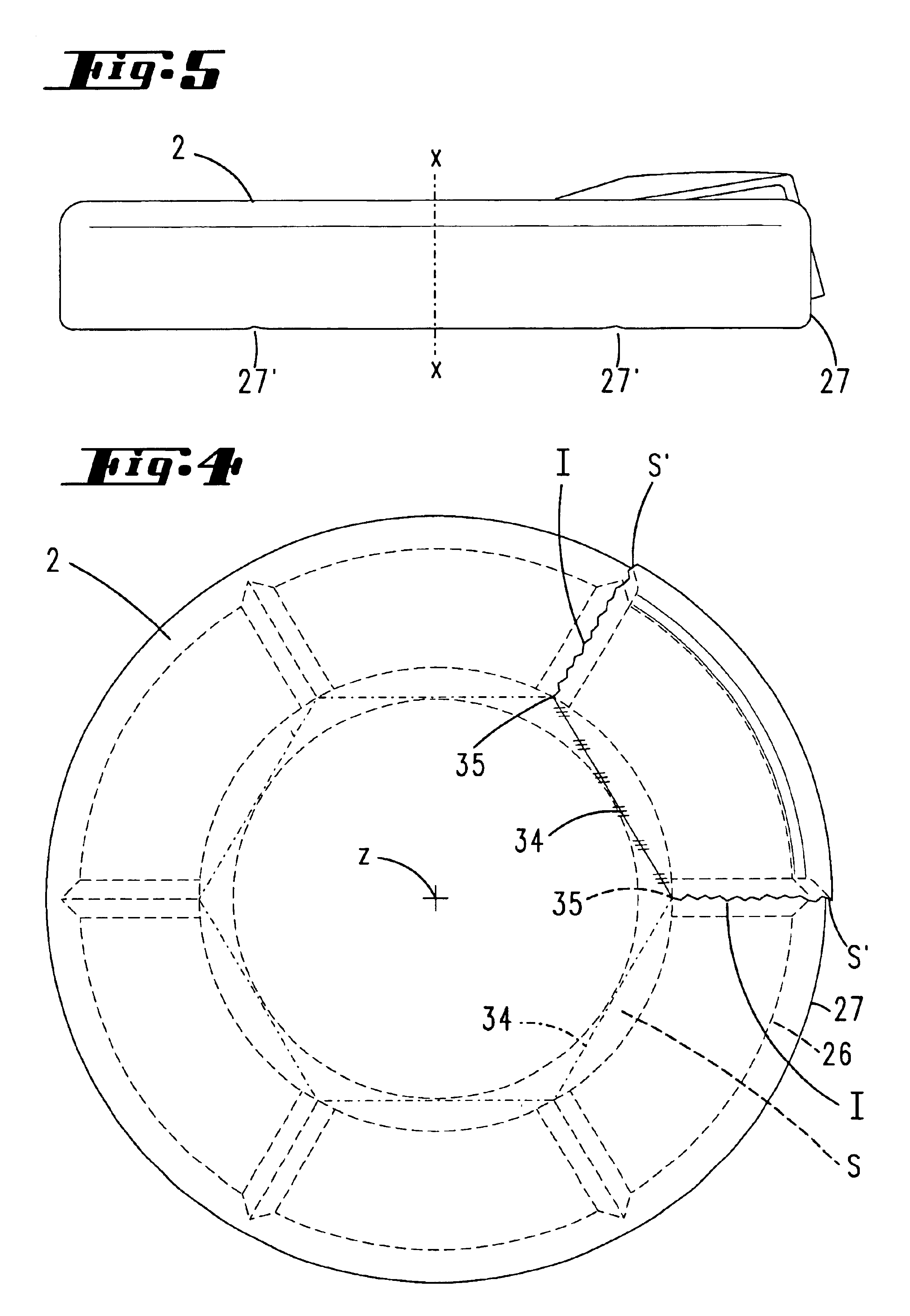Closing cap for infusion and transfusion bottles
a technology for infusion and transfusion bottles, applied in the direction of bottles, needles, containers, etc., can solve the problems of axially oriented weakening, cracking, and cracking, and achieve the effect of facilitating bottle opening and increasing the level of security
- Summary
- Abstract
- Description
- Claims
- Application Information
AI Technical Summary
Benefits of technology
Problems solved by technology
Method used
Image
Examples
Embodiment Construction
The closure cap 1 illustrated comprises a covering plastic cover 2 with a metallic flanged cap 3 below it.
The flanged cap 3, which accommodates the plastic cover 2 straddling it, is flanged on a bead 4 of the flanged neck 5 of a bottle 6, for example an infusion bottle. The flanged rim bears the reference 7. The flanged-cap rim edge which engages over it is denoted by 3′.
The bottle 6 consists, for example, of glass.
Plastically deformable aluminum is expediently used for the metallic flanged cap 3.
A closure stopper 8 is then part of the closure cap 1. This is a hollow stopper. It is seated in a sealing manner in an opening 9 in the flanged neck 5 of the bottle 6.
The opening of a cavity 10 in the closure stopper 8 faces the interior 11 of the bottle 6. The cavity 10 lies in the section which forms the actual stopper and, as can be seen, ends flush with a horizontal end face 12 of the bead 4 of the flanged neck 5. An annular flange 13, which is formed on the periphery in the upper regi...
PUM
 Login to View More
Login to View More Abstract
Description
Claims
Application Information
 Login to View More
Login to View More - R&D
- Intellectual Property
- Life Sciences
- Materials
- Tech Scout
- Unparalleled Data Quality
- Higher Quality Content
- 60% Fewer Hallucinations
Browse by: Latest US Patents, China's latest patents, Technical Efficacy Thesaurus, Application Domain, Technology Topic, Popular Technical Reports.
© 2025 PatSnap. All rights reserved.Legal|Privacy policy|Modern Slavery Act Transparency Statement|Sitemap|About US| Contact US: help@patsnap.com



